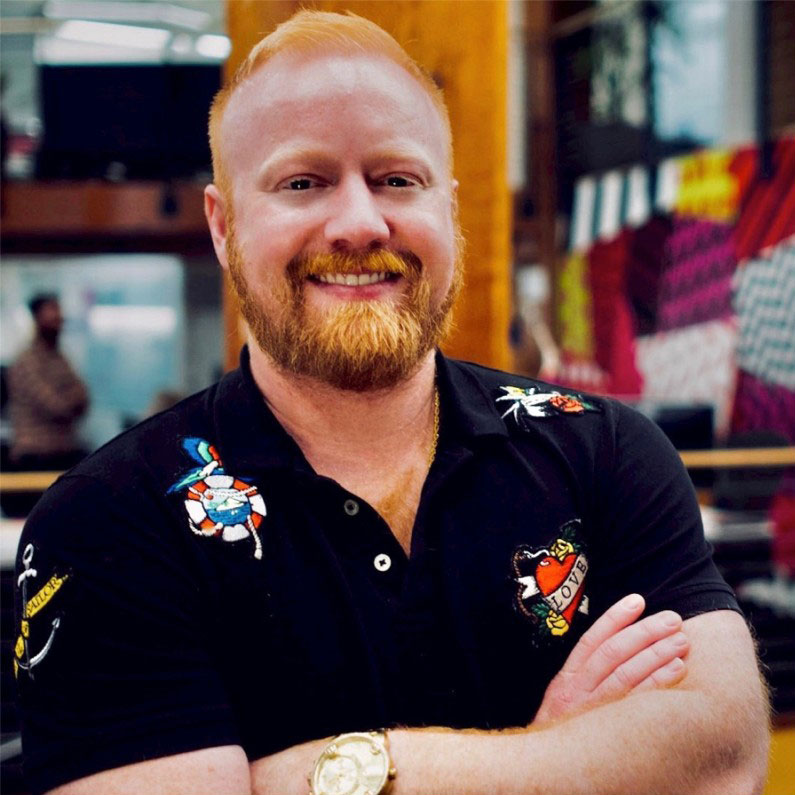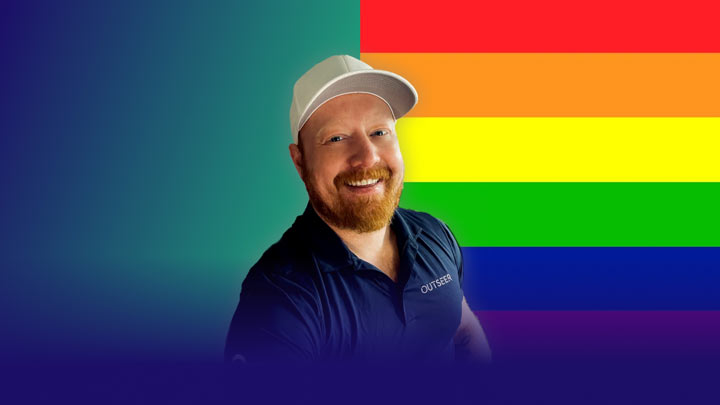I’m one of the lucky ones. For many LGBTQIA+ kids facing discrimination, words of support typically fall squarely in “it gets better” territory. I never faced the challenges so many others faced growing up—which created challenges of its own when I hit adulthood. The lessons I’ve learned can be instructive to organizations seeking to show support for LGBTQIA+ employees and the community. It might just surprise you.
Growing Up, Coming Out
To explain what I mean, it might help to start by hitting rewind, back to 1998. I was a junior at College Preparatory School in Oakland, California—a small but very inclusive academic environment. I remember a student getting detention for scratching a homophobic epithet on one of the school’s buildings. The faculty’s zero-tolerance policy against hateful language made me feel safe, supported, and included.
One day, I arrived home from school to find my mom bustling about the living room. She asked me how my day was, and, in typical teenage fashion, I gave her a terse, “It was fine” before beelining it for my bedroom. But before I left, I turned and said: “Oh by the way, I’m gay.” My mom’s response? An enormous hug that emanated the kind of love and acceptance all LGBTQIA+ community members should experience. Later that year, I took my first boyfriend to prom. I felt like any other normal kid because that’s how I was treated.
Coming out early was beneficial. Understanding my identity and being embraced by my loved ones gave me the space to foster a level of confidence and security that so many LGBTQIA+ folks find hard to attain.
Bubble: Burst
By 2008, I was starting my career in tech, which I continue to enjoy nearly 15 years later. But early on, I began to realize just what a safe bubble I’d been living in. It became clear to me that there are two common approaches some companies take in supporting LGBTQIA+ employees: refuse to participate in LGBTQIA+ causes at all, or engage in something approaching performative activism.
One year during the Gay Pride Parade in San Francisco, I remember feeling impressed by a popular tech company’s float stacked with excited employees waving rainbow flags and shouting phrases of acceptance. I read later that this company—used by millions of LGBTQIA+ creators worldwide—had instructed employees attending the festivities to refrain from talking about its actual (and quite noxious) LGBTQIA+ policies. In that moment, the safety of my protective bubble was gone.
5 Tips for True Support
This incident was pivotal for me. I needed to have my blinders ripped off in order to approach the world of work differently. It was imperative for me to spend my time and energy on organizations that are unabashedly supportive of LGBTQIA+ employees in effective and intentional ways. If ever a company has been in need of direction on this score, I’ve been happy to provide it—so long as its commitment to supporting employees is unwavering.
In fact, I’ve been asked by companies on several occasions: “How do we support our LGBTQIA+ employees in a meaningful way, and without directly soliciting information—or making assumptions—about their orientation?” Here are a few ideas to get you started:
• Launch an LGBTQIA+ support group. Be sure to make it open to all LGBTQIA+ identifying folks and non-LGBTQIA+ identifying allies.
• Add clear LGBTQIA+ inclusive language into company non-discrimination clauses and policies, and in as many internal and external facing materials you see fit: job postings, town hall decks, boilerplates, etc.
• Make a sizeable donation to a LGBTQIA+ support group or charity—but do so during any month other than June. Otherwise, it can come off as empty virtue signaling.
• Instead of being the main event, think of June as the start of Q1 for your LGBTQIA+ initiatives. Make it the month when the company’s executive team, including LGBTQIA+ support group members, reviews their approach to LGBTQIA+ inclusivity. Determine what’s working and what’s not working for LGBTQIA+ employees, and develop an agreed-upon action plan for the year ahead.
• Caveat emptor: Be sure to conduct due diligence on any charity before donating. A good place to start is Human Rights Campaign. Be wary of large, well-known charities that can seem relatively innocuous but may have a history of homophobia.
• Even if you only have a small budget, you can still show support with a very light lift. And demonstrating acceptance is always free.
Word to the wise: just like my own bubble, some people may not recognize the presence of homophobia in the workplace if they’re not negatively impacted by it. And even without blatant homophobia, your LGBTQIA+ colleagues can still feel unsafe and unsupported.
According to a 2021 survey from Glassdoor, 53% of LGBTQIA+ employees say they’ve experienced or witnessed anti-LGBTQIA+ comments by co-workers. And 47% say they believe being out at work could hurt their career. Instead of self-congratulations, these results suggest organizations that think they’re doing a good job can always find ways to do better.
Instead of just performative support this June, let’s all commit to getting better about the real kind.















